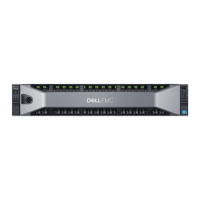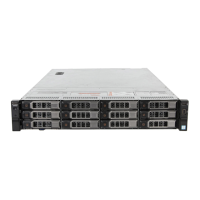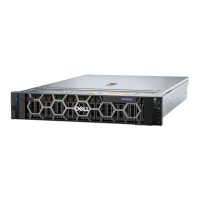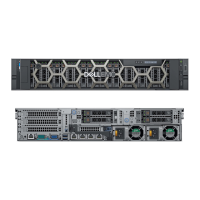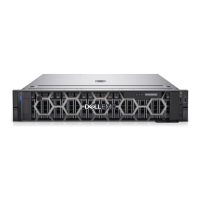43 PowerEdge R730 and R730xd Technical Guide
Acoustical dependencies for the R730xd
Chassis types: The idle fan speeds and acoustics generally depend on chassis types – shown as
below from the quietest to the loudest:
— 24 x 2.5” chassis
— 12 x 3.5” chassis
— 8 x 3.5” + 18 x 1.8” SSD chassis
System thermal profile selected in BIOS: The system default setting is “Power Optimized (DAPC)”,
which is in general lower fan speed/ noise level. If “Performance optimized” is selected, the fan
speed/ noise level will become higher.
CPU power:
— Configurations with “low-power” CPUs (which have lower temperature limits than standard
CPUs), such as an Intel Xeon E5-2650L v3 or E52630L v3 at 65W CPU, under moderate or
heavy utilization, will be about twice as loud as typical configurations.
— Configurations increase in loudness as CPU power increases from that in typical
configurations.
Types of storage devices:
— HDDs
> Lower speed HDDs (such as 7.2K RPM SATA, 10K RPM SAS) are generally quieter than 15K
RPM SAS drives.
> Loudness increases with the following progression of drives: SATA (2.5” or 3.5”), 2.5” 10K,
2.5” 15K, 3.5” 15K.
— SSDs
> SSDs are not themselves audible.
> However, a configuration with PCIe SSD requires more airflow for cooling and will be
significantly louder than a typical configuration. Under highly-stressed condition, the
sound power levels may go up to 7.0 bels.
Quantity of HDDs and SSDs: For the following reasons, higher acoustics accompanies increase
in quantity of HDDs.
— Airflow needs and acoustics increase with the number of drives. For example, an R730xd 3.5”
configuration with 16 drives will be about 50% louder in idle condition than one with four
drives (6.2 bels vs. 5.6 bels).
— Acoustics related to the HDD itself (read/write noise) increases with the number of HDDs
installed.
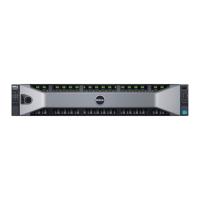
